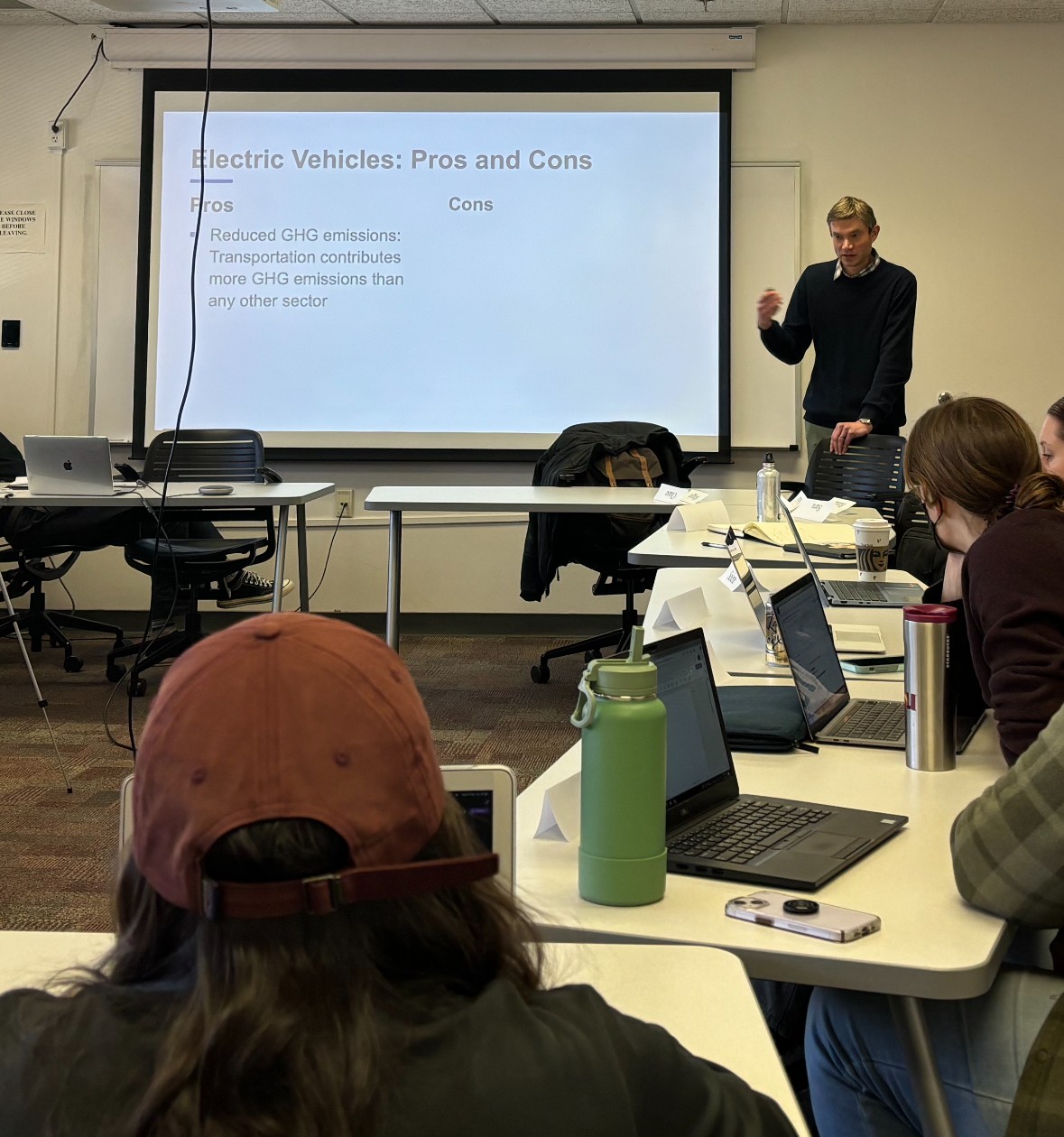Aaron Sussman on Transportation Policy and Decreasing New Mexico’s Traffic Fatality Rate
Evaluation Lab News
Posted: Mar 29, 2024 - 12:00am

On February 14 the Policy Seminar hosted Aaron Sussman as a guest speaker. Mr. Sussman works in transportation planning and policy. He is the New Mexico lead and principal planner for Toole Design Group. Mr. Sussman is a dynamic planner and project leader with expertise in both public and private sectors. His portfolio spans various regional and active transportation projects, corridor analyses, and crafting local design guidelines. Known for devising practical transportation strategies that align with the land use context, Mr. Sussman specializes in creating solutions that are both feasible and supportive of the environment they serve.
Mr. Sussman began by asking the students what factors influenced their choice of how they got to class that morning. The answers were parking availability, proximity, availability of reliable public transit, etc. New Mexico is not known for its public transportation but is known for dangerous drivers, and the state, unfortunately, boasts one of the worst traffic fatality rates in the country, including one of the highest pedestrian fatality rates. Many factors contribute to these grim outcomes, including the sheer number of cars on the road. But how can people get where they need to go without using a single occupancy vehicle?
Mr. Sussman told the class that the City of Albuquerque and the Mid-Region Council of Governments both posed forms of this question to the public to find out what people in the community wanted and what type of public transportation policies they would be willing to support. The survey overwhelmingly resulted in people claiming to support more pedestrian-friendly areas and better and more prevalent public transportation in Albuquerque. In response to this public input and the availability of federal grant funding, the city began the ART project in 2016.
The ART project not only expanded and streamlined a bus line through the main part of the city but also took steps to improve areas along Central Avenue, making them safer and more pedestrian friendly. For example, though many opposed much of Central Ave being one-lane, that is directly responsible for people driving slower, being more aware of their surroundings, and, in general, making the area much safer for pedestrians. The large medians created for the ART buses improve the safety of pedestrians, so walkers only need to cross one slow-moving lane of traffic at a time. In addition, because areas like Nob Hill are now safer for pedestrians, this encourages a lot more foot traffic to all the shops and restaurants in that area.
Despite the ART project being generally unpopular with the public, safety improvements are an undeniable outcome. Since its opening, there has been a 60% decrease in fatal crashes along Central Ave.
In light of this experience, Mr. Sussman’s advice to the class is that data matters. Even though ART is not a fan favorite, there is real data that highlights the importance of making these kinds of changes. Ridership is the 6th highest in the US, and fatal crash numbers have decreased significantly. He also emphasized the importance of storytelling. The increased number of pedestrians and housing along the corridor in Nob Hill speak for themselves and the safer conditions created by the changes made by the City.
